The best frost-resistant grape varieties: characteristics, description, selection criteria
Winter-hardy grape varieties are planted throughout the country - in the Leningrad and Rostov regions, in the Volga region and the Central region. Most varieties do not require shelter for the winter and can withstand harsh climates and sudden weather changes. To choose the right variety, it is recommended to study the rating of the best, paying attention to temperature indicators, immunity to disease, and care requirements.
Features of frost-resistant grape varieties
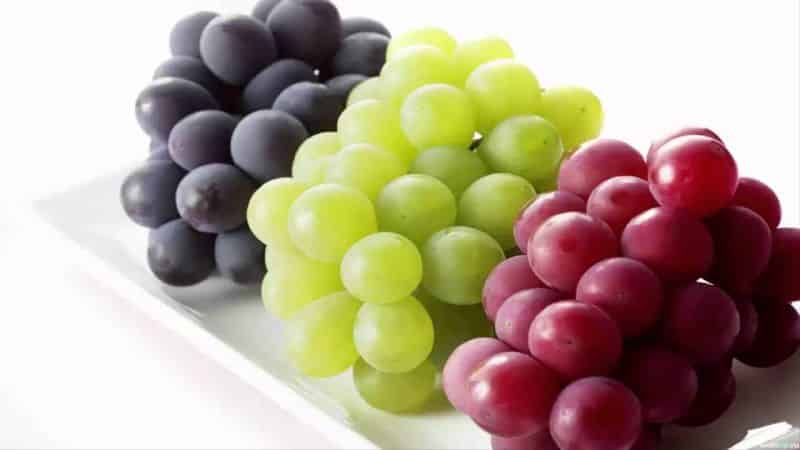
Grapes love warmth, light and sun. However, this does not prevent it from being grown in regions with cold climates - in the Urals, in Siberia, some regions of the Far East. These lands are characterized as places with short and cool summers, sudden weather changes, frequent frosts and winds. Therefore, gardeners choose frost-resistant grape varieties for planting, which produce a stable harvest every year.
From an agrotechnical point of view, frost resistance is understood as the ability of a crop to withstand low temperatures without damaging the eyes of an annual shoot. These eyes are responsible for further fruiting and the number of healthy fruits. Agronomists divide frost resistance into several categories - weak, medium, increased. The colder the region, the higher it should be.
Top best
How to choose a frost-resistant grape variety? To begin with, it is recommended to study the top best - their taste and commercial qualities, yield and features.
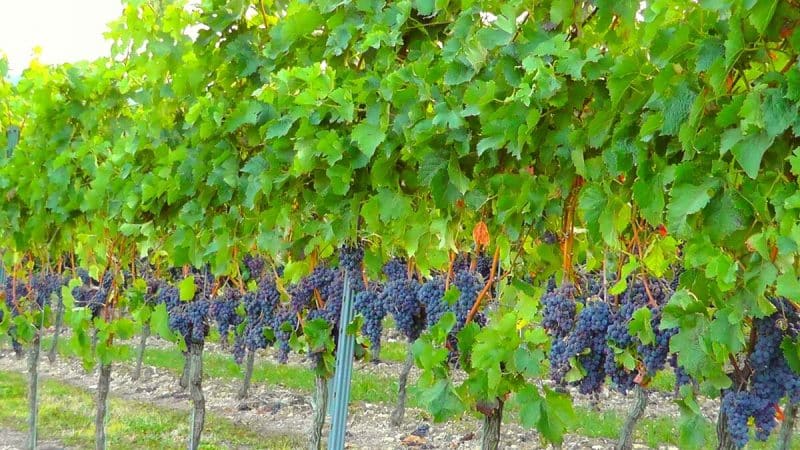
Isabel
The popular Isabella grape variety appeared in America and in a short time became widespread throughout the world. Gardeners are attracted by the appearance of the fruit - blue-violet berries with a dense white coating are beautifully collected in a large bunch. The weight of the brush reaches 2 kg.
Isabella's taste is rich, sweet and juicy, with a strawberry aroma. The skin is dense, the flesh is tender and pleasant. The ripening period is about 6 months from the date of appearance of the first buds. The plant is tall, so for it landings choose spacious areas.
Lady fingers
Mid-season variety with a ripening period of about 140 days. The bushes are vigorous, the leaves curl, the color is rich green. The clusters are large, cone-shaped, the weight of one reaches 400 g. The fruits are elongated, the skin is thin, the pulp is of medium density.
Depending on the subspecies of the variety, the color can be light green with a yellow tint or pinkish. Lady fingers are valued for their pleasant sweet and sour taste with a tart aftertaste. Productivity is about 4 kg per 1 sq. m.
Lydia
The technical grape variety Lydia is often confused with Isabella - both varieties originated in America and have several similarities. The bushes grow quickly and are powerful. Up to 40 kg of delicious grapes are harvested from one bush per season. The berries ripen gradually, the fruiting period is extended.
The shape of the fruit is round, the color is purple-red, and may be brown during ripeness. The skin is dense, so the crop is suitable for long-term storage. The pulp has a strong berry aroma, the taste is sweet and tart. Lydia grapes are used for fresh consumption or cooked juices and compotes.
Sharov's riddle
The extra early variety ripens in 3-3.5 months. The bushes are small, the leaves are medium sized. The weight of the bunch is about 500 g, the shape is spreading.The berries are round, the weight of one varies from 2 to 3 g. The color is dark blue or black, there is a slight waxy coating.
The flesh is pleasant, there are small seeds inside. The taste is berry-fruity, the aroma is sweet. The fruits do not fall off after ripening and stay on the bushes for a long time. After harvesting, they are stored in a cool place for up to 80 days. Productivity is about 20 kg per plant per season. The variety is popular in Russia, Belarus and Ukraine.
Taiga
The name of the variety speaks for itself - Taiga is suitable for growing in the harsh conditions of the Siberian and Ural winters. The bushes are vigorous, the shoots are spreading. The clusters are conical in shape, weight - about 300 g.
The shape of the fruit is spherical, slightly elongated, the weight of the berry is 2-3 g. The color is dark purple or black, the peel is of medium density, with a slight light coating. The taste is sweet, without sourness. Taiga is universal in use - suitable for fresh consumption, processing, and long-term storage. Productivity is about 20 kg per bush.
Amur breakthrough
The height of the bush reaches 2.5 m, so Amur breakthrough is planted in spacious areas. The weight of the bunch is about 350 g, the berries are dark blue and round. The weight of one is 3 g, the thick skin protects the crop from cracking. Amur breakthrough is resistant to diseases, can withstand frosts down to -40°C, and is therefore suitable for cultivation in the coldest regions.
The taste is pleasant, sweet and sour, there are few seeds. It is important to monitor the level of moisture in the soil - the variety does not tolerate prolonged absence of watering. Productivity - 10 kg of fruits per plant.
Pink pearl
The variety received its name due to the beautiful red-pink spherical fruits. The berries are collected in a conical bunch weighing 400-500 g. The growing season is no more than 120 days.Berry weight - 5 g, medium-density pulp, tender. The taste is classic grape, pleasant. The skin is thin, so pink pearls are not suitable for long-term storage. Over the summer, gardeners harvest about 8 kg of ripe grapes from one bush. It is recommended to consume the berries fresh or process them immediately after harvest.
Tukay
The Russian variety Tukai is valued for its winter hardiness and ease of care. The clusters are large - up to 1.5 kg, ripen by mid-July. The berries are tasty and sweet, with a bright nutmeg aroma and high sugar content. The weight of one is 4 g, the skin is dense, the color is white-amber with green tints. The fruits do not fall off and are rarely attacked by insect pests and diseases. Productivity - up to 20 kg per bush.
Interesting! The above varieties are not only suitable for growing in harsh climatic conditions, but are also often used for cooking. The sweet and pleasant taste of grapes goes harmoniously with various products: pineapple, champignons, olives, chicken breast, cheese, herbs.
The best early-ripening, mid-ripening, late-ripening grape varieties
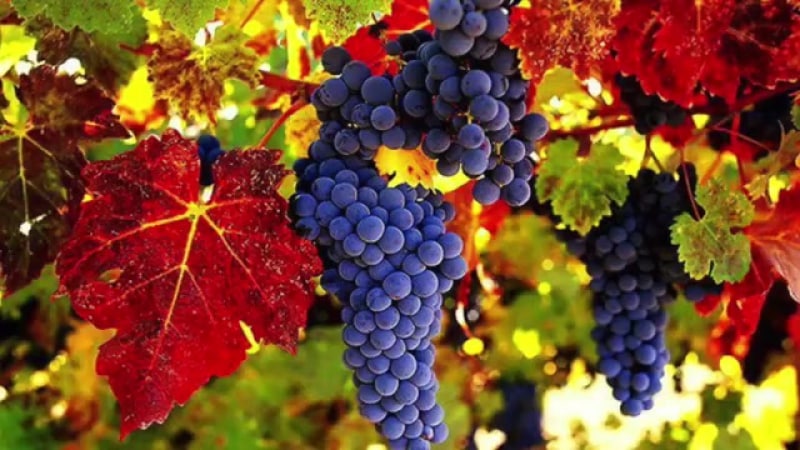
Some gardeners do not like to wait long and prefer early varieties that produce the first harvest in early or mid-July. Others plant late-ripening grapes, which ripen only in the fall.
Early ripening frost-resistant grape varieties
Such varieties are chosen for cultivation in the northern regions. The ripening period varies from 95 to 110 days. During this time, the grapes have time to grow the vine, gain juiciness and sweetness. Also, early ripening varieties rarely get sick.
Muromets
The ripening period is 105 days, the bushes are vigorous, the weight of the bunch is about 500 g. The berries are dense and elastic, protected from cracking.The weight of the fruit is 4 g, the color is dark purple, there is a pronounced waxy coating on the peel. The pulp is dense and crispy, sweet. Muromets is distinguished by its keeping quality and ease of care. Productivity - 12 kg per plant.
Codrianca
The table variety is common in the northern regions and central Russia. The berries are large, round, dark purple. The weight of one is about 10 g, the weight of a bunch reaches 1.5 kg. The ripening period is 110 days. Codreanc They are valued for their sweet berry pulp and stable yield - gardeners harvest up to 20 kg per bush per season.
Hercules
Early table grapes ripen in 90 days. Clusters weighing up to 500 g, the berries are dense, light peach in color with a bloom. The taste is sugary and fragrant, with a nutmeg aftertaste. Hercules does not suffer from powdery mildew or rot, and is resistant to attacks by insect pests. Withstands temperatures down to -25°C. Suitable for fresh consumption, processing and storage. Productivity - 10-15 kg.
Mid-season varieties
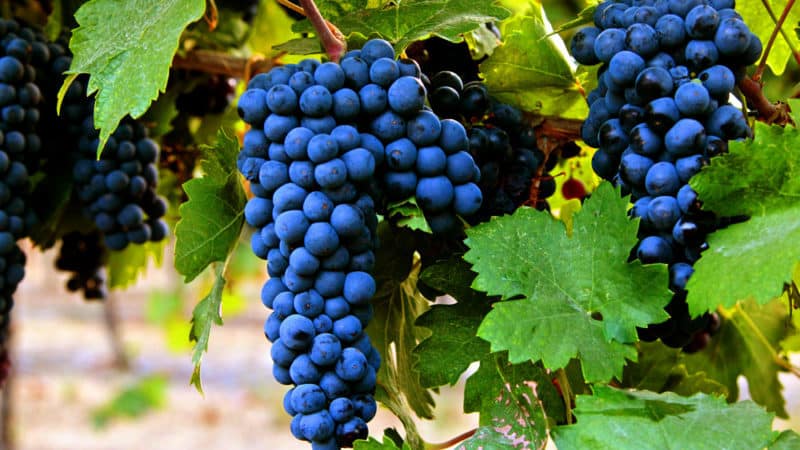
Mid-season varieties are easy to care for. The grapes ripen by August, the berries grow large and juicy.
Original
The variety can withstand temperatures down to -22°C and is resistant to diseases. Medium-sized bushes with powerful roots. The berries are pink-green, with a sharp tip. The peel is dense, the flesh is juicy and sweet. The original has a pleasant nutmeg aroma and a refreshing sweet and sour taste. The weight of the bunch is from 600 to 800 g.
Crisp
Vigorous grapes with large white-pink fruits. Berry weight - up to 3 g, bunch - 400 g. Delicate, berry aroma. The pulp is medium dense, sweet. Crispy ripens by the beginning of September. Productivity - up to 10 kg per plant. Universal in use.
Chocolate
The berries have an original chocolate-nutmeg taste.The shape is oval or cylindrical, the color is purple-brown, the skin is dense. The weight of the bunch varies from 700 to 1200 g, the weight of the berry is about 8 g. To experience the unusual taste of Chocolate grapes, it is recommended to consume them fresh.
Late ripening varieties
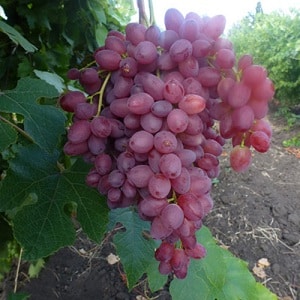
The average ripening period for late-ripening grapes varies from 150 to 170 days. The fruits are rarely affected by rot and are resistant to insect pests.
Taifi
The berries are large, white or pink, rounded-elongated in shape. The weight of the berry is about 4 g, the surface of the grape is covered with small dots and a waxy coating.
The pulp is juicy, fleshy, crispy. The taste is sweet with a slight sourness. Tayfi is valued for its attractive presentation and versatility in use.
Hercules
Withstands temperatures down to -23°C, unpretentious in cultivation. The weight of the bunch reaches 1 kg, the shape is conical. The weight of the berry is about 3 g, the taste is sweet and sour, the aroma is rich berry. The color of the peel is purple with a blue tint. Productivity - 8-12 kg per bush.
December
A purple grape variety with delicate pulp and small seeds. The weight of the bunch is about 300 g, the berries are compact and elastic. It is resistant to diseases. The taste is sweet, the yield is stable - about 13 kg per plant. They are grown in the middle zone, Tatarstan, Samara region, and Moscow region.
Attention! Experienced gardeners recommend covering late-ripening grape varieties with burlap for the winter. The fruits ripen late, so it would be a good idea to provide them with additional protection.
White, dark and pink varieties
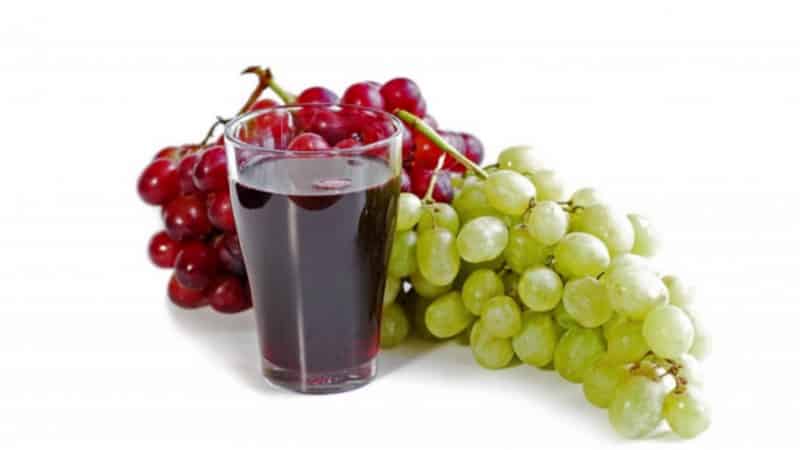
White varieties are commercial and table varieties; these include berries of white, light yellow and green colors. The berries are used for processing and food, and they prepare juices, wines, and compotes. Russian gardeners choose varieties Arcadia, Aligote, White Muscat, Chardonnay. Their average ripening period is 130 days; care consists of traditional watering and fertilizing. The berries can withstand temperatures down to -20°C, but it is recommended to cover them with protective material for the winter.
Dark varieties are famous for their sweet and juicy taste, pleasant berry pulp. The color of dark varieties is black, blue, purple, burgundy, brown. Among the frost-resistant grapes, black Vostorg, Kodryanka, and Athos are noted. Dark grapes are rich in sugars and contain healthy vitamins and minerals.
Pink grape varieties are loved for their attractive appearance - the berries are light red, pinkish, with an amber tint. Popular varieties include Russian Early, Julian, and Tason. The berries are universal in use, and the plants are unpretentious in care. Both amateur gardeners and experienced farmers grow pink grapes.
Best for different growing regions
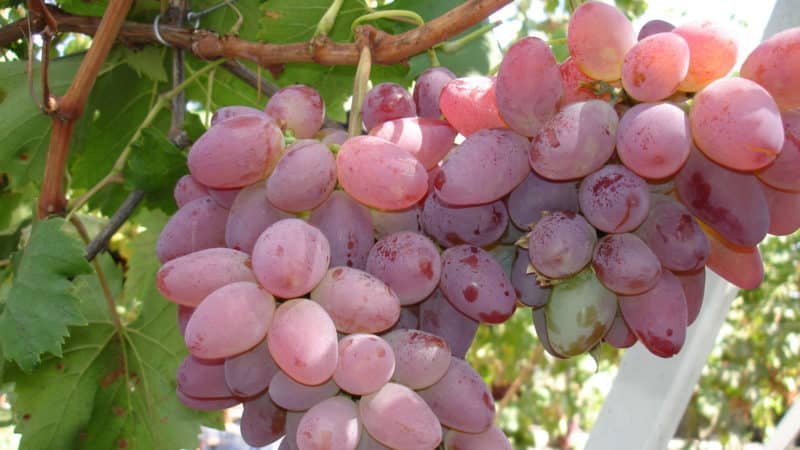
For the coldest regions of Siberia, it is recommended to choose frost-resistant varieties that can withstand temperatures down to -40°C. These are the Amur breakthrough grapes, Lydia, Aleshenkin. With such varieties, gardeners can be sure that the shoots will not freeze and will delight you with juicy and large berries in the summer.
For milder frosts (up to -25°C), the grapes chosen are Lady's Fingers, Tukay, and Cardinal. For the winter they are covered with thick burlap, and the protection is removed at the end of April or beginning of May. Such varieties are suitable for the Chelyabinsk, Sverdlovsk, and Orenburg regions.
In central Russia and the Moscow region, Isabella, Pink Pearl, and Taifi grapes are grown. As a rule, the lands here are more suitable for growing fruit crops. The grapes rarely get sick and are not a hassle to care for.
How to choose a frost-resistant grape variety

First of all, pay attention to the temperature regime. Each variety is designed for a specific temperature; it is recommended to obtain information about this from the seedling seller. For example, if the Original grape variety can withstand temperatures down to -22°C, then it makes no sense to plant it in Khabarovsk, where the temperature drops to -40°C - the bush will freeze.
Equally important are taste qualities and product characteristics - shape, color, weight. Some varieties are universal in use and are used for different purposes, while others are intended only for food or processing. Berries with thick skins are used for storage; those with thin skins are eaten immediately after harvest.
Conclusion
Many frost-resistant grape varieties are not covered, that is, they do not need protection for the winter. However, experienced gardeners still recommend covering the bushes at the end of autumn, especially in cold regions.
Popular varieties include Isabella, Lady's Fingers, Pink Pearls, Hercules, Aligote. They can withstand frost, sudden drops in temperature, and wind. To ensure that the grapes grow sweet and large, gardeners regularly fertilize the soil and keep the garden clean. The harvested crop is used fresh or processed.